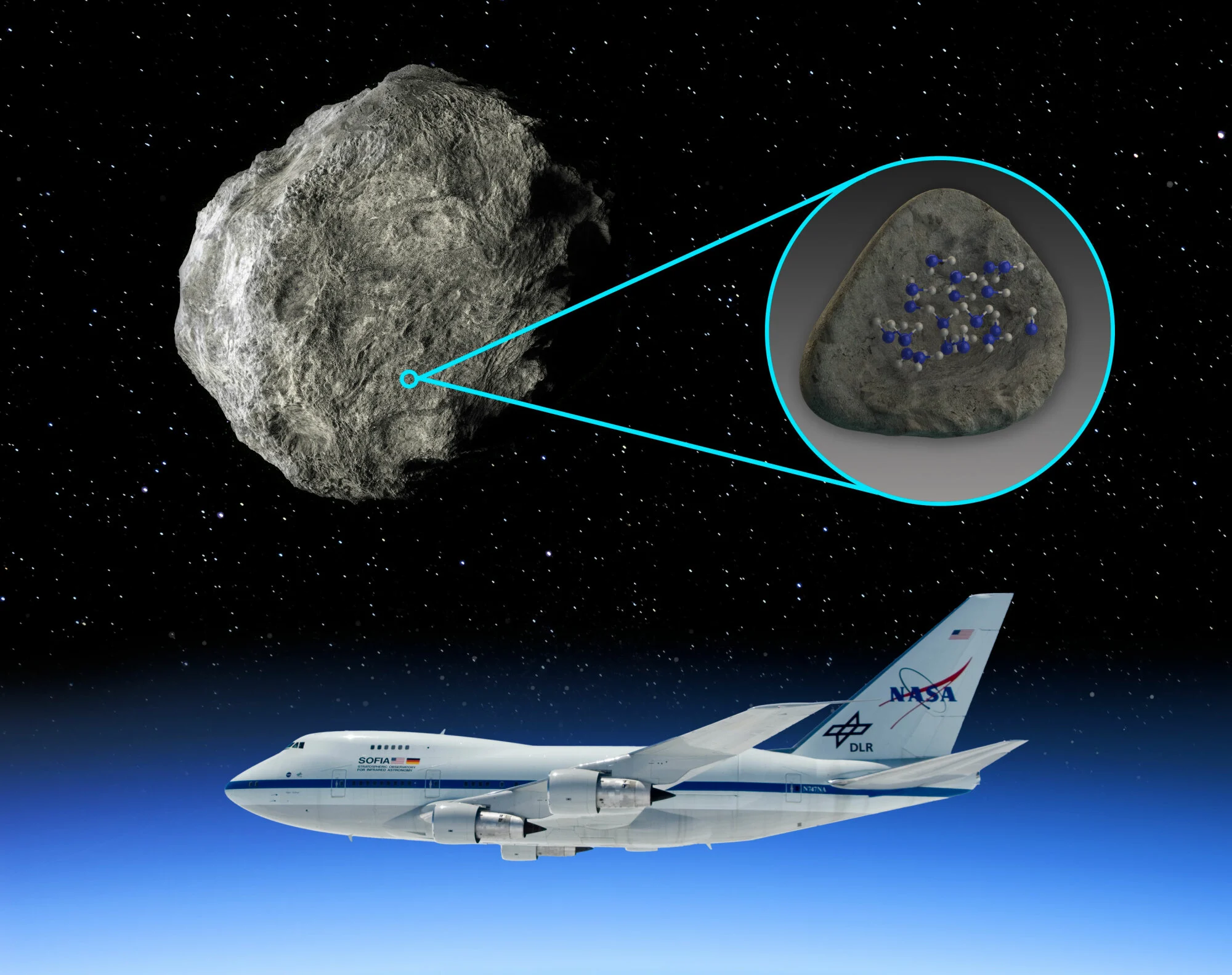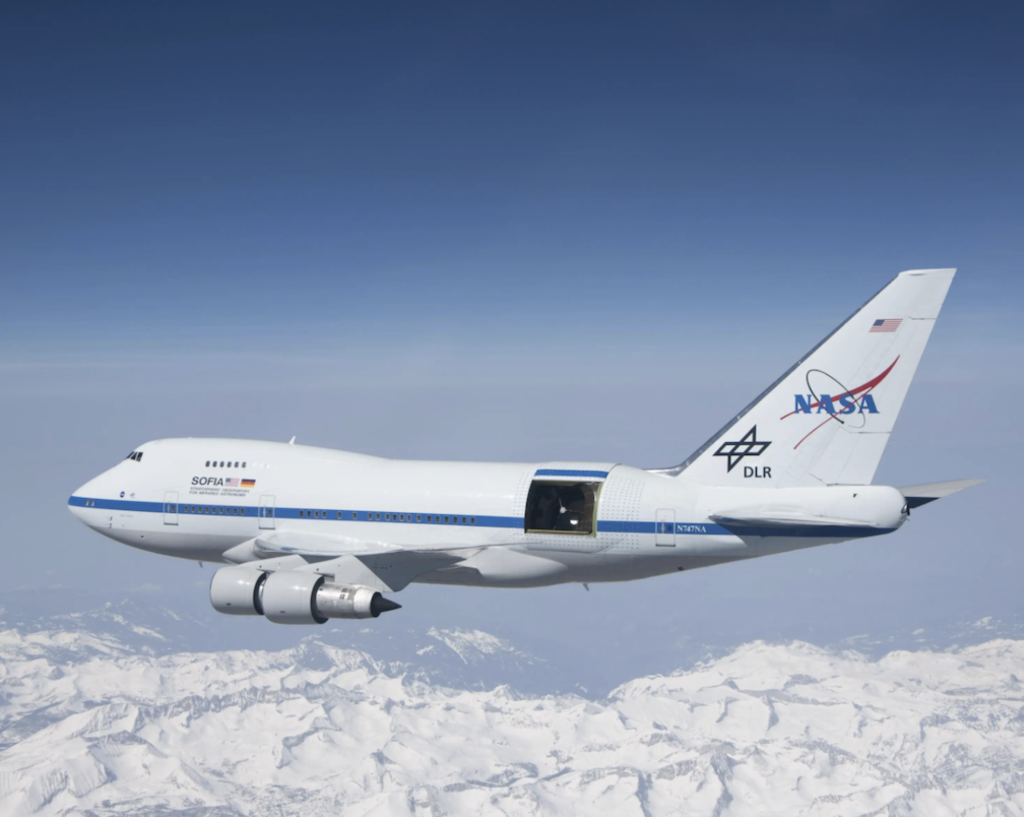
Scientists from the Southwest Research Institute (SwRI) have discovered water molecules on an asteroid’s surface for the very first time. The researchers utilized data from the now-retired Stratospheric Observatory for Infrared Astronomy (SOFIA) — a joint project of NASA and the German Space Agency (DLR).
Scientists looked at four silicate-rich asteroids using the FORCAST (Faint Object infraRed CAmera for the SOFIA Telescope) — a dual-channel mid-infrared camera and spectrograph placed on a high-altitude airplane — to isolate the mid-infrared spectral signatures hinting at molecular water. They were able to identify water on two of them.
Some asteroids are rich in silicates; others contain ice. While the silicate asteroids form closer to the sun, icy bodies emerge farther away, making the discovery of the supposedly dry, silicate-rich asteroids particularly intriguing.
“Asteroids are leftovers from the planetary formation process, so their compositions vary depending on where they formed in the solar nebula,” said SwRI’s Anicia Arredondo, lead author of the paper published in The Planetary Science Journal. “Of particular interest is the distribution of water on asteroids, because that can shed light on how water was delivered to Earth.”

The authors believe water on asteroids could help shed light on the solar nebula‘s (the gaseous cloud from which the Sun was born) material distribution and evolution. The findings may also guide the search for potentially habitable planets and extraterrestrial life by pinpointing water’s distribution.
The researchers analyzed the mid-infrared spectra of asteroids Iris, Parthenope, Melpomene, and Massalia. While previous research had detected hydrogen in various forms on our moon and other asteroids, distinguishing between water and its chemically similar counterpart, hydroxyl, proves challenging. In the SOFIA observations, however, Iris and Massalia had the equivalent of a 12-ounce water bottle trapped in a cubic meter of soil spread across the surface, chemically bound in minerals.
Detecting molecular water on asteroids raises intriguing questions about the inner solar system’s water formation and distribution mechanisms. Water can be absorbed onto silicate surfaces, trapped or dissolved in silicate impact glass, or chemically bound to minerals. The study’s results align with the abundant water found on the sunlit Moon, suggesting similar processes may be at play across different celestial bodies.
“We detected a feature that is unambiguously attributed to molecular water on the asteroids Iris and Massalia,” Arredondo said. “We based our research on the success of the team that found molecular water on the sunlit surface of the Moon. We thought we could use SOFIA to find this spectral signature on other bodies.”
Looking ahead, the team plans to utilize the James Webb Space Telescope to expand their research. The forthcoming observations include initial measurements of two more asteroids and a proposal to study an additional 30 targets.




